![]()
This blog will tell you what FR4 PCB is, in the process of making the FR4 PCB boards, what aspects should be considered when choosing FR4 circuit boards, and why the PCB material FR4 is so widely used.
To find out more please see below:
Part 1: What is FR4 PCB?
To put it first, FR4 PCBs are printed circuit boards using FR4 laminates. Most PCBs are made of FR4 (Flame Retardant level 4).
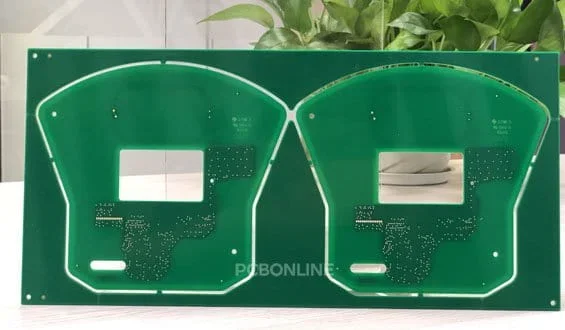
FR4 is not the certain name of the PCB FR4 material. It is rather the grade of the material. It refers to the fourth grade of flame retardant material.
In the abbreviation of FR4, the FR stands for "flame retardant", which shows that the PCB material FR4 used with the UL94V-0 standard on plastic materials inflammability.
The code 94-0 would be written on all the FR-4 PCBs, which shows the guarantee to protect the device from fire propagation during the burning of the material.
The composition of the FR4 material constitutes fibers of glass in the epoxy resin. This material has anti-flame properties.
This grade of laminate material has high strength and performance. Moreover, it has a good ratio between strength and weight.
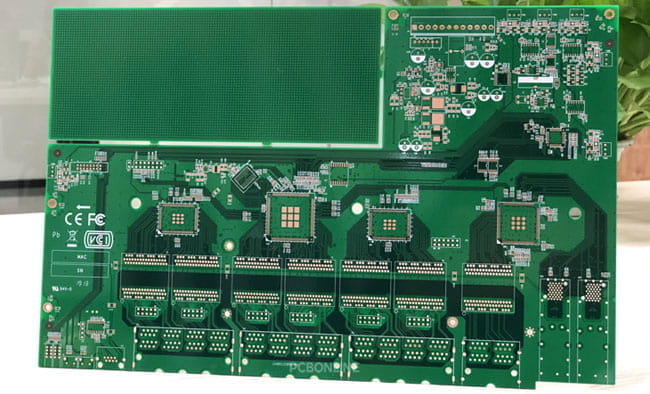
As the FR4 material does not have any capability for absorption of water, it has good electrical insulating properties.
Below are the reasons why the FR4 substrate PCB is in great demand in the market:
- Compact and easy-to-design
- Strongest plastic fastener materials
- Low cost but with multiple functions
- Moisture resistance keeps high mechanical strength
- Good insulating capacity in dry or humid environments
First, we used the FR4 material as an insulating material for PCB, then by adding copper to it, we made it to use as a conducting sheet. It has a greater strength for resisting and the ability to absorb the moisture on the PCB sheet.
FR4 makes the PCB a small-cost and good-quality circuit board. The FR4 PCB material is the backbone of PCB devices.
During the PCB fabrication process of FR4 PCB, the FR4 boards are laminated with copper layers at a specific temperature.
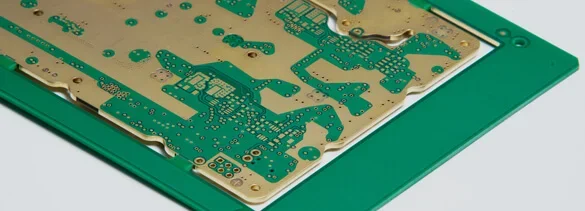
According to the different lamination temperatures, there are high-Tg FR4, middle-Tg FR4, and low-Tg FR4. And the FR4 printed circuit boards using high-Tg material are called "high-Tg PCB".
And bromine is used for FR4 material manufacturing, FR4 is also called a halogen element. However, there are halogen-free PCBs, which have less than 900 PPM of Cl or Br and less than 1500 PPM of total halogens in the FR4 PCB.
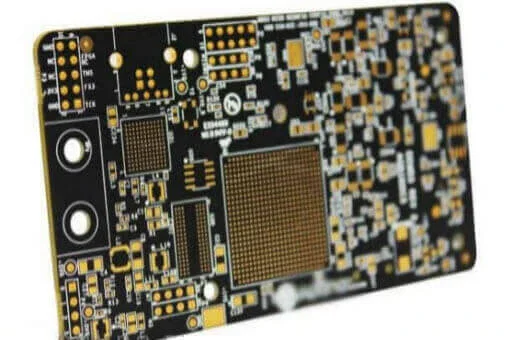
To know more details about FR4 PCBs, you may need to check the properties of the PCB material FR4 below.
Part 2: Properties of FR4 PCB Material
![]()
Why do people think FR4 material is an excellent PCB material? Because FR4 PCB has good flame retardancy and electrical insulation.
The maximum ambient temperature of standard FR4 PCB is 248°F to 266°F depending on its brand and its filler.
FR4 is ideal for insulation as well as for board supports with no laminated copper, and it has a higher TG of around 180°C.
Here we mentioned the chemical, electrical, and mechanical properties of FR4 used for making FR4 PCB.
- FR4 has a good insulating capacity in humid or dry environments
- It has high mechanical strength
- The standard FR4 PCB has heat resistance almost of the order of 248°F to 266°F
- It is a very good fire-resistant
- FR4 has the benefit of a good resistance-weight ratio
- It has good dielectric strength and can withstand high-voltage
- FR4 has good resistance to pulling tension
However, the thermal dissipation and high-frequency properties of FR4 material are poor. The dielectric constant (Dk) of FR4 is too high (about 4 to 5), and it is far from meeting the requirements of RF/microwave applications.
For this reason, we generally used ceramic PCBs or metal (aluminum and copper) substrate PCBs to replace FR4 PCBs in thermal management applications. We use Teflon/PTFE filled with ceramic for high-frequency and high-speed applications.
Now, you understand what an FR4 PCB is and the properties of the FR4 material. And we are going to discuss different types of FR4 PCB.
Part 3: Types of FR4 PCB
![]()
Here is a list of the many types of FR4 PCBs:
- Single-sided FR4 PCB
- Double-sided FR4 PCB
- Single-layer FR4 PCB
- Double-layer FR4 PCB
- Multilayer FR4 PCB
- Thick-copper FR4 PCB
- Lead-free FR4 PCB
- Halogen-free FR4 PCB
Depending upon the design of FR4 PCBs, copper forms the circuits on a single side or both sides of the FR4 substrate. So there are single-sided and double-sided FR4 PCBs.
And according to different FR4 PCB layers, there are single-layer, double-layer, and multilayer PCBs.
Besides, if the copper thickness of an FR4 PCB is 3oz and above, we call it a thick-copper PCB.
And if the Tg of FR4 material is 180°C and above, the FR4 PCB is a high-TG PCB.
What's more, there are lead-free PCBs and halogen-free PCBs.
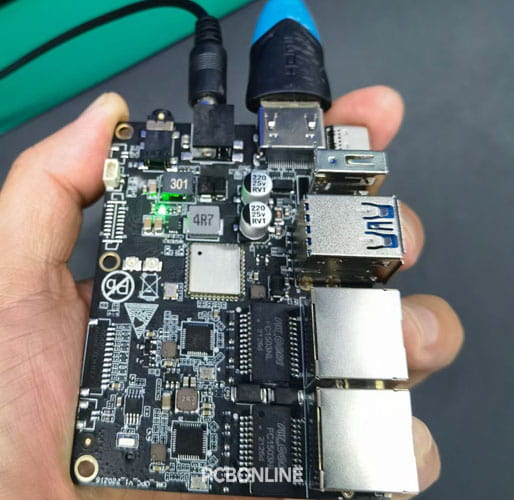
Lead-free PCB means that during the production process of FR4 PCBs, all materials and equipment should meet the RoHS standards, and the lead content should be smaller than 0.1%.
With time and the development of new technologies, electronic products become smarter and more advanced. FR4 PCBs with so many types always provide an affordable option for electrical design.
Apart from the above types of FR4 PCBs that use pure FR4 material, some rigid-flex PCBs PCBs use FR4 and polyimide materials.
In rigid-flex PCBs, the core material of the flex layers is polyimide, and that of the external rigid layers is FR4. We used rigid-flex FR4 boards because they are more flexible and can fit in extremely small spaces.
After knowing the many types of FR4 PCBs, you may also want to know how you can choose FR4 PCBs to meet your application demand.
Part 4: Factors to Consider When Choosing FR4 PCB:
![]()
1. Thickness of Sheet:
The thickness depends on your project and what you want to make; the thinnest boards are widely used for printed circuit boards.
Thin PCBs reduce stress. Ideally, we require FR4 thickness almost from 1 to 3 inches.
2. Impedance matching
In electrical and electronic equipment, impedance or frequency matching is very important for low-frequency or high-frequency printed circuit boards.
Paying more attention to those points would help the FR4 boards to derive and run safely.
3. Spacing
During the designing of FR4 printed circuit boards, space-saving is a very important factor.
For USB connectors and Bluetooth accessories, spacing is very important.
Mostly we used the thinnest boards for designing.
4. Weight
Mostly, FR4 PCB thickness decides its weight. For small or lighter products, it would be lightweight and vice versa.
5. Thermal conduction:
Thermal conduction is a very important term to know when choosing FR4 PCB.
What's more, it depends on the temperature.
For temperature identification, we should have to look at the thermal coefficient of the dielectric medium or dielectric constant. FR4 has excellent heat resistance, which is why it is very popular.
Choosing appropriate specifications for FR4 PCB requires expertise and experience. You can work with a professional FR4 PCB supplier to ensure the success of your project.
Part 5: High-Quality FR4 PCB Manufacturer without Quantity Limit
All the above-mentioned FR4 PCBs can be custom-made at PCBONLINE, a one-stop PCB manufacturer certified by ISO.
Founded in 1999, PCBONLINE has two large advanced PCB manufacturing bases and one PCB assembly factory. It provides FR4 PCB fabrication and assembly from prototypes to massive production.
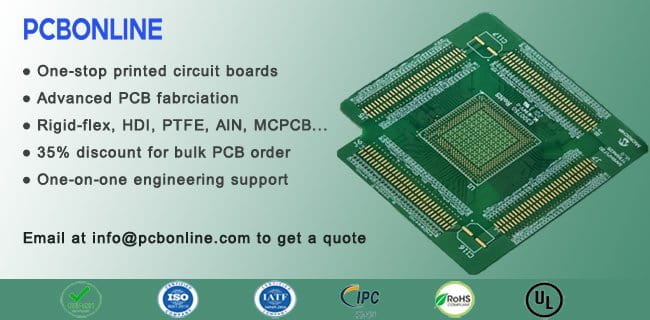
- Strong FR4 PCB fabrication capabilities meeting all your design requirements
- Extremely high-quality FR4 PCB and PCBA certified with ISO 9001:2015, IATF 16949, RoHS, REACH, IPC, and UL
- Free FR4 PCB, PCBA sample, and PCBA functional testing for bulky production order
- One-on-one engineering support and customer services throughout your project
- Affordable FR4 PCBs and assemblies due to source factory manufacturing
- In-time delivery and fast lead-time of FR4 PCB fabrication and assembly
PCBONLINE has had many successful FR4 PCB fabrication cases and rich experience in industrial, automotive, consumer, computing, communication, aerospace, defense, medical, and agricultural devices. If you have any FR4 PCB or other PCB/PCBA needs, feel free to send your Gerber or inquiry to info@pcbonline.com.
Conclusion
In conclusion, after reading all the content above we can have a rough understanding of FR4 PCB and the FR4 material. Are you finding the most suitable PCB supplier for yourself? PCBONLINE will meet your demand. If you still want to save costs, there still is a way to help you! You can ask PCBONLINE to check and optimize your design, which is free of cost.
Many customers of PCBONLINE are buying PCB boards for different specific uses. FR4 is just one of those PCB materials. You also can find more PCB laminate material preferences.




